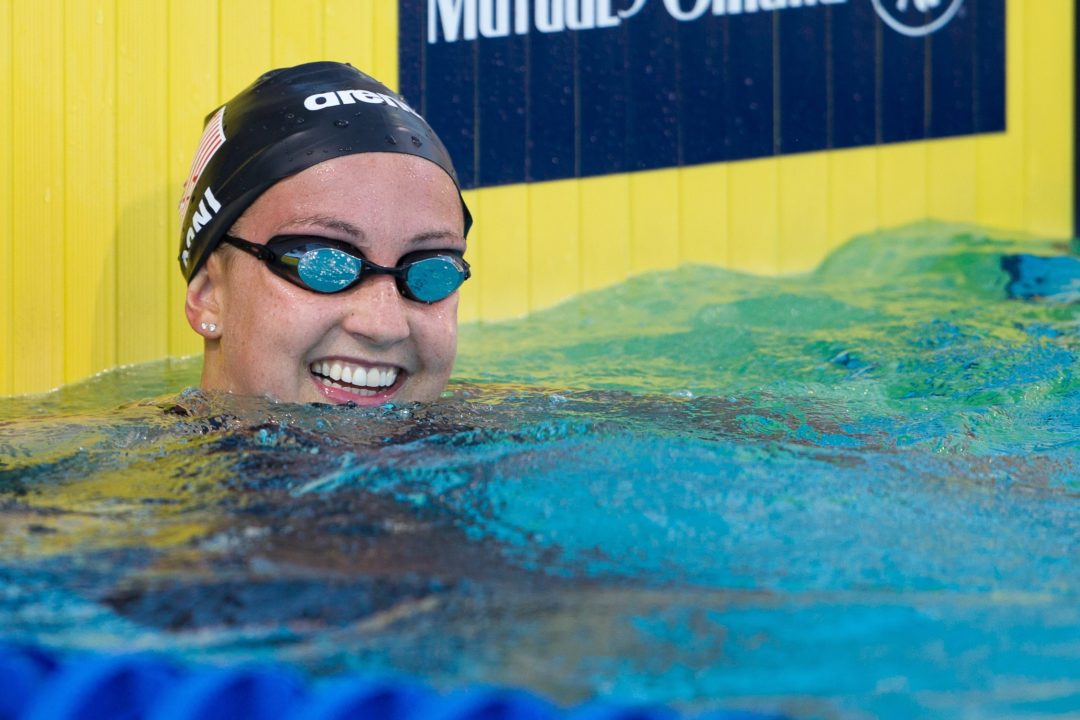With the 2017 World Championships now less than 20 days away, swim enthusiasts everywhere are gearing up for the biggest aquatic competition outside of the Olympic Games. As is typically the case in a post-Olympic year, several key athletes from heavy-hitting nations will be absent from the competition due to varying reasons, ranging from those simply taking a break to others using the early months of the quadrennial to address health concerns.
The latter is such the case with 2016 100m freestyle champion Kyle Chalmers of Australia, who had made the decision several weeks ago to withdraw from this summer’s World Championships to undergo surgery for his heart condition. At just 19 years of age, Chalmers suffers from Supraventricular Tachycardia (SVT), a condition which results in one’s heart beating very fast, reaching upwards of 300 beats per minute.
Chalmers isn’t the only high-profile athlete to have undergone treatment for the condition, as American Rebecca Soni also suffered from SVT during her career’s prime. Soni won back-to-back gold medals in the women’s 200m breaststroke at the 2008 and 2012 Olympics and established a new world record in the event in London. Soni opted to undergo a procedure to address her SVT, which ultimately alleviated her symptoms, but not before she lived with the health concern while simultaneously training for the Olympics.
We spoke with Soni recently to get an insider’s view on how SVT impacts a world-class athlete and how she dealt with the effects en route to becoming one of the world’s most successful breaststrokers.
Regarding SVT symptoms, when did you first start noticing something was going on? Was it only during swim practice or also during everyday life?
SONI: During swim practice. My SVT was exercise induced so I mainly experienced it during intense training. I started noticing it around the age of 13 (to my best recollection).
When were you officially diagnosed? Did you try a few things to help manage or did you immediately start discussing surgery?
SONI: I was initially diagnosed quite a bit after I started experiencing the problems. Because it only happened during practice, by the time I went to see a cardiologist, we were not able to trigger it on a stress test. It took at least a year before we got the diagnosis. I managed it for many years by avoiding the triggers (caffeine, dehydration, exhaustion, certain medications, etc) but it was only occurring about once a month, at the most. I would pull myself out of the pool, when an episode occurred, and wait until my heart rate came back under control. I only explored having the ablation procedure in college.
What as the surgery like? Any downtime after, or was it a pretty ‘simple’ process?
SONI: It was more a procedure than a surgery. It was only minimally invasive, meaning the recovery was simple. The downtime was minimal, also. I was back in the water a bit more than a week later. The hardest part to recover was my ability to really push myself in the water, as I’d be restraining for fear of triggering the SVT for a long time!
What were the symptoms like…can you try to put an episode into words?
SONI: I felt a trigger, which was like a mild little kick in my chest. Then my heart rate would skyrocket, and I would quickly begin to feel tried and sluggish (due to lack of blood flow to my extremities). I would get to the wall and get out of the pool, and I would sit and wait until the heart rate began to return down to normal. Usually only a few minutes. Upon returning to the workout, though, that sluggish feeling stayed for another day or two.
Did you immediately feel better after the procedure? Did you notice any other differences other than just not a rapid-beating heart?
SONI: Yes! Immediately better. The rapid heart beat was no longer an issue. It took me a while to regain the ability to fully push myself physically. I’m so glad for the procedure!
How did having a procedure help you mentally?
SONI: I felt like I was back to normal. Having trained poorly for a while in fear of triggering an episode, I was used to being at the back of the lane and restraining my effort. Now that I was physically capable of pushing myself again after the procedure, it made pushing myself more exciting, challenging and fun than it would have been had I not been so restrained for so long!
Having officially retired from competitive swimming in 2014, Soni has been living in Southern California while working her business, Rise Athletes, an online mentoring platform for young athletes. Soni helps train using one-on-one mentorship with Olympians, including her friend and co-founder Caroline Burckle.
ab

I like Rebecca Soni. Great champion and nice person.
US women’s 200 breast misses her so much.